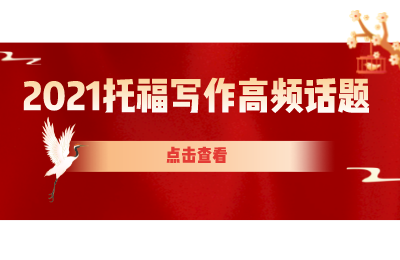英语专四备考干货|句子成分
时间:2022-03-04 1191 16人参与

Tara老师
毕业于毕业于四川外国语大学,进修于美国威廉玛丽学院,拥有7年雅思口语/听力,托福口语科目教学经验,7年出国语言课程培训经验;雅思总分8分;剑桥大学英语教师资格证(CELTA)及TKT;英语专业八级;BEC商务英语高级学员出分率99.7%,学生好评分4.96分(满分5分)
英语专业四级想要拿到一个满意的分数并不是一件容易的事。今天我们为大家讲解一下英语专四的句子成分,一起来看看吧~~~
句子成分
必须成分:主语、谓语
可能有的成分:宾语、补语、修饰语(定语、状语、同位语)
1.主语subject
一般在句子开头,是句子的“陈述对象”。主语通常由名词、代词、不定式、动名词、相当于名词的词组或从句引用充当。
示例
The students all love their English teacher.
They go to school by bus.
Watching TV too much is bad for your eyes.
What we need is a good rest.
I love you is often heard on Valentine’s Day.
形式主语(formal subject)和真实主语(real subject)
主语是不定式、动名词短语或分句时,常会放在句尾,用it代替它原来的位置,这个it称为形式主语,放在句尾的原主语为真实主语。
示例
It is hard to get to sleep.
It’s a pity that you can’t come.
2.宾语object
宾语是行为动作的对象,一般可分为动词宾语和介词宾语,充当宾语的可以是名词、代词、名词化的形容词、动名词、动词不定式、介词短语或句子。
示例
I bought a ticket for mom.
I enjoyed talking to you.
They decided to close the border.
We hoped that all would come well.
直接宾语(direct object)和间接宾语(indirect object)
直接宾语指所给予或告知的“事物”,间接宾语指接受或被告知事物的“人”。
示例
Please show me your passport.
The arrangement saved a lot of time for us.
On the bus,he often gives seat to an old people.
形式宾语(formal object)和真实宾语(real object)
作宾语的短语或从句之后有宾语补语时,必须将用作宾语的短语或从句放在补语之后,用it代替它的原位置。
示例
I think it wrong waste time.
3.表语predicative
位置上,表语总位于系动词之后,与系动词一起构成句子的谓语;意义上,表语通常说明主语的身份、特征或状态。
一般由名词、代词、形容词、副词、不定式、动名词、分词、介词短语或句子充当表语。
示例
They are brother and sister.
What I want to say is this.
This is what I want to say.
Her father is 65.
The proof of the pudding is in the eating.
4.补语complement
补语时起到补充说明作用的成分,用以弥补主语或宾语意义之不足。补语可分为主语补语(subject complement)和宾语补语(object complement),一般由名词、动名词、形容词、介词、副词、不定式、分词充当。
示例
They considered that a lie.
I found everything in good condition.
That man has never been seen to smile.
Foreigners are called Lao Wai.
5.定语attribute
定语起到修饰限定名词或代词的作用,可分为前置定语和后置定语。单词用作定语时,一般置于所修饰的名词之前;短语和从句作定语时,一般置于所修饰的名词之后。可用作定语的有名词、形容词、代词、数词、动名词、分词、不定式、介词短语、从句等。
示例
His father is a doctor.
Mr.Green has 2 sons.
The girl under the tree is Kate.
The man downstairs couldn’t sleep well.
That’s the way to do it.
6.状语adverbial
状语是用来修饰动词、形容词、副词以及全句的句子成分。根据其作用,可分为时间、地点、原因、目的、结果、条件、让步、方式、程度和伴随状语等。
示例
I often get up at 6.
Pandas only live in China.
You should put the book where it was.
We’ll go to the beach for the picnic this Sunday.
It rained heavily,causing severe flooding.
7.同位语appositive
当两个指同一事物的句子成分放在同等位置,其中一个句成分用来说明和解释另一个句子成分时,前者就叫做后者的同位语。同位语一般紧跟在其所说明的名词之后。可以用作同位语的有名词、代词、数词、不定式、介词短语和句子等。
示例
His brother John is a famous musician.
Are you three all right?
Their plan,going abroad,did not come true.
We heard the news that our team had won.
精选课程
热门推荐
- 1雅思口语话题——Describe a person who contributes to the society
 521人参与
7427121
521人参与
7427121
- 22021年全年托福高频写作题目汇总
 619人参与
337789
619人参与
337789
- 3如何进行有效的英文写作训练?
 152人参与
219592
152人参与
219592
- 4因疫情无法参加GMAT考试的考生,可免费退考或转考
 179人参与
2592104
179人参与
2592104
- 5去日本留学的条件:如何申请日本大学?
 821人参与
310551
821人参与
310551
阅读推荐
-
2022年3月、4月雅思考试取消通知(最新3月10日更新结果)
雅思2022-03-11

-
雅思考场红黑榜一览!
杭州雅思2023-04-25

-
托福写作改革:新题型和独立写作有什么不同?
托福2023-04-26

-
2023年4月26日最新托福考情来了!
杭州托福2023-04-27

-
IB数学AA和AI该如何选择才能拿7分?
英语学习2023-04-26

-
杭州GRE培训机构哪个好?
GRE2023-04-28

-
GMAT考试4月27日换库!机经解析+换库预测+考试安全期更新!
GMAT2023-04-27

-
杭州开设了AP课程的国际学校有哪些?
国际高中2022-03-03

-
普通高中在读转学A-Level课程,需要怎么做
出国留学2023-04-07

-
2023年AMC10如何备考?杭州有AMC10数学竞赛辅导机构吗?
其它原创2023-04-25









